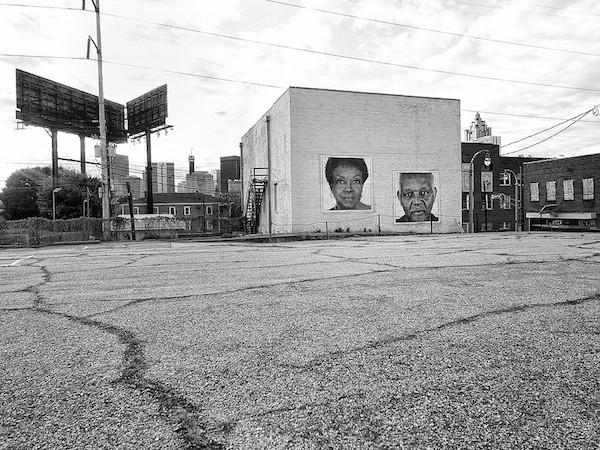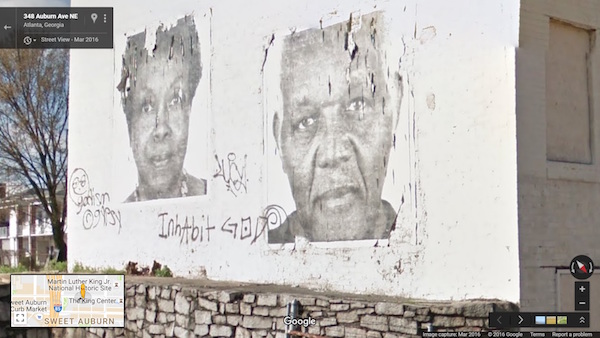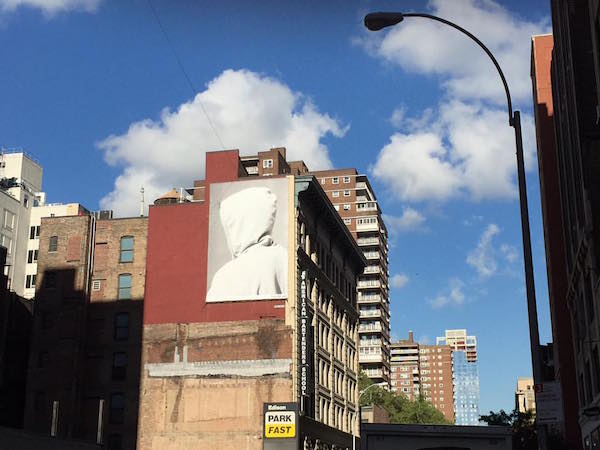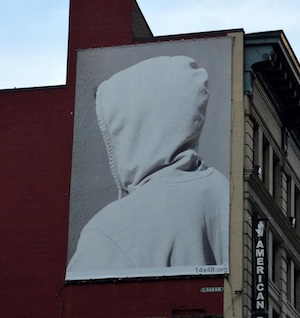By La Tanya S. Autry
La Tanya S. Autry is a Ph.D. candidate in art history at University of Delaware and a curatorial fellow at Yale University Art Gallery. In addition to studying representations of race and memory, she advocates for racial justice in the arts. She is a co-founder of The Art of Black Dissent, a dialogue-centered pop-up exhibition/program spotlighting visual culture of the African-American liberation struggle. In this article she examines public art and the Black Lives Matter Movement. Autry and Jennifer Wingate will be co-chairing “Public Art in the Era of Black Lives Matter” at the 2017 College Art Association in New York City on February 16, 2017. Autry’s digital handle is Artstuffmatters.*
“The history of black liberation movements in the U.S. could be characterized as a struggle over images as much as it has also been a struggle for rights, for equal access.” -bell hooks, Art on My Mind: Visual Politics, 1995
Visual culture is central to the Black Lives Matter social movement. This initiative, founded by Alicia Garza, Opal Tometi, and Patrisse Cullors, began in 2012 on Twitter as a response to the tragic racialized killing of 17-year-old Trayvon Martin. Within the next couple of years, social media users increasingly employed the hashtag, or keyword, #BlackLivesMatter to document and organize around a proliferation of imagery spotlighting acts of police brutality against African-Americans. Consequently, cellphone images and videos of mass protests and acts of anti-black state violence now permeate public arenas of digital and actual space.
This informal reportage, or photojournalistic-styled imagery, intersects with other cultural expressions of race in public space. Although the black subject is rarely encountered in the durable materials of stone or metal pervasive in public memorials or public art in the United States, it thrives as an itinerant and persistent theme. The following snapshots of three artistic interventions by African-American artists demonstrate the eruptions of the black image in public art contexts, which negotiate complex sociopolitical practices as they oppose racial injustices and revitalize critical memory.
The Maafa Commemoration, New Orleans, Louisiana
The Black Lives Matter movement highlights the Maafa Commemoration of New Orleans, an annual assembly and procession that began 16 years ago as a response to the devastation of the trans-Atlantic slave trade. African-American artists and community leaders of the Ashé Cultural Arts Center acknowledge the long and ongoing struggles for freedom in this event that occurs over the July 4th weekend. At this gathering, which starts at Congo Square, the historic site of 18th century enslaved Africans, hundreds of participants of all ages, mainly local residents, dress in white to recall New Orleans’s roots as a primary slave port, to honor the traditions of the African ancestors, and to mourn the passing of both those who survived and those who perished in the Middle Passage, or the Maafa, the Swahili word for “Great Disaster.”
As the occasion also addresses the legacy of slavery, it delves into current politics. At the 2015 ceremony demonstrators focused on and countered the prevalence of New Orleans’ monuments commemorating white supremacy. Working in concert with Black Youth Project 100, New Orleans chapter (BYP) and other local activist groups, the Ashé Cultural Center’s Maafa Commemoration challenged the city’s investment in symbols of racial oppression. This critique intersects with growing calls from racial justice advocates to examine how race and racism operate throughout social, political, and cultural spaces in the United States. Additionally, it calls forth past organizing for removal of Confederate monuments from the city’s public spaces.
Torrence Taylor at the statue of Jean-Baptiste Le Moyne, Sieur de Bienville, Maafa Commemoration, July 2015. Photograph by La Tanya S. Autry.
Torrence Taylor, a performance artist and demonstrator at the Maafa Commemoration 2015, stressed the obscured histories of these sites. He vigorously casted the red, green, and black colors of the Pan-African flag across the Louisiana State Supreme Court. His graceful yet angry gestural marking, accompanied by historical accounts from event organizers, animated the centuries of pain African-Americans and other residents of color experienced due to the colonization, slavery, segregation, and racial violence associated with these spaces. Taylor placed the flag at the base of the nearby statue of Edward Douglas White, a former Confederate soldier and Louisiana judge, who, while later serving as Chief Justice of the Supreme Court, supported the infamous segregationist doctrine of “separate, but equal” put forth by the 1896 case of Plessy vs. Ferguson. Taylor echoed this reclaiming later at Bienville Place before the procession culminated at the Mississippi River. He climbed on the base of the monument that venerates the 18th century founder of New Orleans and Louisiana governor Jean-Baptiste Le Moyne, Sieur de Bienville. Bienville, depicted here as the standing figure, advocated the institutionalization of the Code Noir, racial legislation used by white colonizers to regulate enslaved Africans. Through applying the Pan-African flag to these structures, Taylor engages New Orleans’ longstanding racial wounds and presents the insistent drive to recover and remake memory and the city.
1960 Who, Sheila Pree Bright, Atlanta, Georgia

Atlanta-based photographer Shelia Pree Bright also employs city streets to address public memory of local African-American political activism. Her 2013 wheat-paste photo mural series1960 Who features 26 portraits of leaders of the Atlanta Student Movement and Freedom Riders. They range in scale from 10’ x 10’ and 12’ x 12’. The dual paste-up of Lonnie King (no relation to Dr. Martin Luther King), and Dr. Roslyn Pope across from Wheat Street Baptist Church depicts two key leaders. The lunch counter sit-in protests of Greensboro, North Carolina inspired King, who was then attending Morehouse College, to fight segregation in his city. He worked with colleagues and founded the Atlanta Student Movement, a collaboration of student leaders from five area institutions. Pope, then a student at Spelman College, authored the influential An Appeal for Human Rights that outlined Atlanta’s discriminatory practices and announced the students’ refusal to comply with the system of segregation. The students’ strategies succeeded in ousting segregation from the area in less than 18 months.

Despite exposure to the elements, several of the murals remain visible as they line spaces where the earlier student activists organized over half a century ago. In 2013, around the same time that Bright was learning of Atlanta’s rich, yet largely unacknowledged past of student organizing against Jim Crow-era discrimination, the courts had acquitted George Zimmerman of the murder of Trayvon Martin. Bright realized that the “street as gallery” approach would be a strategic mode for communicating the social and political connections she found between the 1960s and the contemporary moment. To enhance viewer engagement Bright decided against including the names of the individuals on the murals. She wanted to leave people with questions. With a single subject and no text, the works suggest that the people must be well-known figures. Many viewers probably wonder why they cannot identify these people. This uneasiness with the lack of recognition is central to Bright’s project. She seems to adhere to James Baldwin’s perspective that “Black people need witnesses in this hostile world.” Through stimulating curiosity, Bright makes viewers both witnesses of past activism and critical thinkers about the construction and communication of African-American memory.

Located at 252 W. 29th Street, New York, New York. Photograph courtesy of 14x28.
Hoods, John Edmonds, New York, New York
John Edmonds’s Hoods (now on view) explores intersections between art, commerce, race, and surveillance culture. In this recent collaboration with the public art organization 14x48, Edmonds affixed a photograph from his series Hoods onto a billboard located on a seven-story building in New York City’s Chelsea neighborhood. It is a seemingly simple image of a person wearing a hooded sweatshirt (or hoodie), but Hoods does more than inhabit existing available spaces. It reshapes the urban-scape.
Similar to the creative projects discussed above, Hoods questions knowledge production. The combination of a lack of verbal text or branding markers around the image, and the vertical orientation of the image suggests that the work operates along more complicated registers. After the murder of Trayvon Martin, activists appropriated the hooded sweatshirt from one of the teen’s selfie portraits. The article of clothing quickly evolved into a powerful symbol of racial injustice. Across the U.S. thousands of protestors donned hoodies as they asserted their solidarity with the slain youth.

Hoods concentrates on the racial imaginary and on our ideas about racial difference. In a conversation I had with Edmonds this year, he urged his audience to consider how “certain bodies are understood in public space” through the use of this ubiquitous article of clothing frequently associated with urban youth culture and racial justice activism, the denial of the subject’s face, and the scale of the image in the cityscape. He does not re-present an already hyper-visible stereotype. Instead, Edmonds recontextualizes the trope by selecting this particular photograph from six shots in the series. Edmonds asserts that, instead of generating increased calls for vigilance and even pre-defensive attacks associated with mass media hyperbole, this quiet hooded figure on a pale background urges reflection. In addition, he identifies the work as a memorial, as it serves as a “symbol for all the men and women we have lost to our nation’s racial bias. [It is] a monument for [those] in the sky.”
Closing Thoughts
Fred Moten’s and Stefano Harney’s thoughts on fugitivity and blackness have informed how fugitivity is a central force in the creative expressions discussed above. In public art and monumental contexts in the U.S., blackness itself is fugitive. The nation’s lack of deep engagement with its history of slavery and its lingering practices of racism restricts how African-American representations exist within U.S. public spaces. In the post-Civil Rights era, artists have created more African-American centered public works in permanent materials than past eras. However, more artworks intervene through the realms of performance and temporary installations. As they shift through time and space, they are always engaged in movement. They are fugitive. They disrupt streams of anti-black visual culture enacted in public space in forms including monuments to the Confederacy and other agents of racial oppression, marketing, news media, and social media networks.
Each of these projects reframes established visual tropes as they provide alternative modes of interpreting history and experiencing our contemporary moment. As these artists mediate through the lens of the African-American experience, each takes on the charge of the Black Lives Matter movement by visualizing and humanizing African-American lives. They disrupt the status quo through exploring what John Edmonds has described as the “fluidity [and depths] of being human.” These works prompt each of us to confront the extent of our commitments to principles of justice and our belief in the concept of humanity.
*The author is grateful to Sheila Pree Bright, John Edmonds, Sharon Madanes of 14x48, Viola T. Johnson of the Ashé Cultural Arts Center, and Luther Gray of the Ashé Cultural Arts Center, and Torrence Taylor for providing information on the works of art that she discusses in this article.



